Intransitivity in Theory and in the Real World
Abstract
:1. Introduction
- Transitivity
- Linearity (in thermodynamics: extensivity) implying that
2. Preference, Ranking and Co-Ranking
2.1. Co-Ranking
2.2. Absolute Ranking
2.3. Average Rankings
2.4. Is Intransitivity Irrational?
3. Intransitivity and Game Theory
3.1. Games with Explicit Intransitivity
3.2. Games with Potential Intransitivity
4. Example: Intransitivity of Justice
- (A) Doing nothing;
- (B) Calling the fire service;
- (C) Trying to rescue people from the fire and/or extinguish the fire
4.1. Popular View
4.2. Treatment by Law: Can Do More but not Less
4.3. Strict Intransitivity in Manager’s Choice
- Leadership: if the manager is on site, he/she is expected to lead and organise the site personnel, deploying staff as necessary to actively contain or liquidate the cause of emergency.
- II. Safety:
- (a) the manager and personnel stay on site during emergency if there is no immediate danger to personnel but
- (b) personnel evacuation must be promptly enacted whenever there is a significant danger to personnel.
- (A) Evacuating personnel and abandoning the site;
- (B) Organising personnel to monitor the situation on site;
- (C) Organising personnel to contain and extinguish the fire.
5. Potential Intransitivity of the Original Lotka-Volterra Model
6. Fractional Ranking
6.1. Commensurable Fractional Rankings
6.2. Commensurable Fractional Co-Rankings
6.3. Incommensurable Fractional Preferences
- (a) Non-trivial (non-dictatorial): absolute ranking does not simply replicate one of the fractional rankings: r(…)≁ r(α)(…) for all α;
- (b) Pairwise independent: preference between any two elements does not depend on fractional rankings of the other elements, i.e., R(A,B) depends only on all R(α)(A,B), α = 1, …, K;
- (c) Pareto-efficient: A≻B when r(α)(A) > r(α)(B) for all α.
7. The Subscription Example
7.1. Ariely’s Subscription Example
- (A) Web (W) subscription, $60;
- (B) Print & Web (P+W) subscription, $120;
- (C) Print (P) subscription, $120
7.2. Evaluating Co-Rankings
7.3. Potential Intransitivity of the Subscription Values
7.4. Discussion of the Choices
8. Intransitivity Due to Imperfect Discrimination
8.1. Discrimination Threshold
- (a) weakly intransitive (existence of A∼B∼C≻A) if K = 1,
- (b) semi-weakly intransitive (existence of A≻B∼C≻A) if K = 2 and w(1)ε(1) = w(2)ε(2),
- (c) strictly intransitive (existence of A≻B≻C≻A) if K = 2 and w(1)ε(1) ≠ w(2)ε(2) or K ≥ 3.
8.2. Imperfect Discrimination Due to the Presence of Noise
9. Risks and Benefits
9.1. Hidden Degradation
9.2. Competitive Simulations for Risk-Benefit Dilemma
10. Thermodynamics and Intransitivity
10.1. Transitive Competitive Thermodynamics
10.2. Nearly Transitive Systems
10.3. Strong Intransitivity
- rapid relaxation to a quasi-steady state (which, possibly, can be approximately treated as transitive) with subsequent slow evolution;
- the possibility of alternative directions of evolution (i.e., competitive degradation or competitive escalation);
- violation of Boltzmann’s Stosszahlansatz (the hypothesis of stochastic independence of the system elements) and formation of cooperative structures.
11. Discussion and Conclusions
- ♦ relative comparison criteria or
- ♦ multiple comparison criteria that are incommensurable or
- ♦ multiple comparison criteria that are known approximately or
- ♦ comparisons of groups of comparable elements.
- relativity of strength and dependence of preference on perspective
- cyclic behaviour instead of relaxation to a unique equilibrium
- relatively slow evolutions punctuated by sudden collapses and changes
- complex patterns of behaviour (e.g., cooperative structures).
Acknowledgments
Conflicts of Interest
Appendix
A. Potential Intransitivity
B. Preference Properties and Indicator Co-Ranking
B.1. Coarsenings and Refinements
B.2. Transitive Preferences in Intransitive Systems

B.3. Transitivity and the Indicator Co-Ranking
C. Primary and Secondary Rankings
C.1. Current Rankings
C.2. Properties of Current Rankings
- (a) If the primary preference is currently transitive, the primary and secondary current rankings coincide (i.e., R*(Ci) = R**(Ci) for all Ci ∈ ).
- (b) If the primary and secondary rankings coincide (i.e., R*(Ci) = R**(Ci) for all elements Ci ∈ ), then the secondary preference is a coarsening of the primary preference (i.e., Ci ≺″Cj =⇒ Ci ≺Cj).
- (c) In particular, if the primary and secondary rankings coincide and are strict (i.e., current rankings of different elements are different: R*(Ci) ≠ R*(Ci) for any Ci ≁ Cj), then the primary preference is currently transitive.
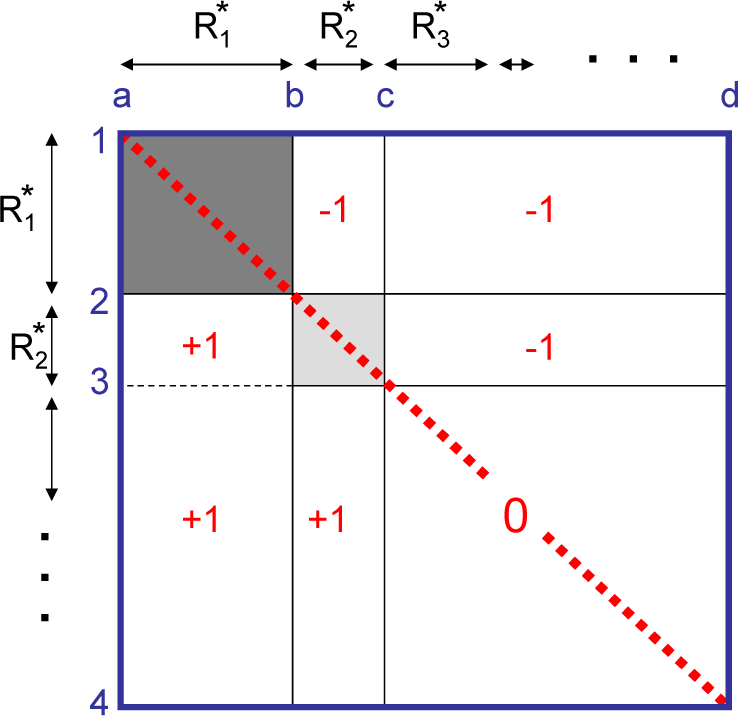
C.3. Maps of Current Rankings
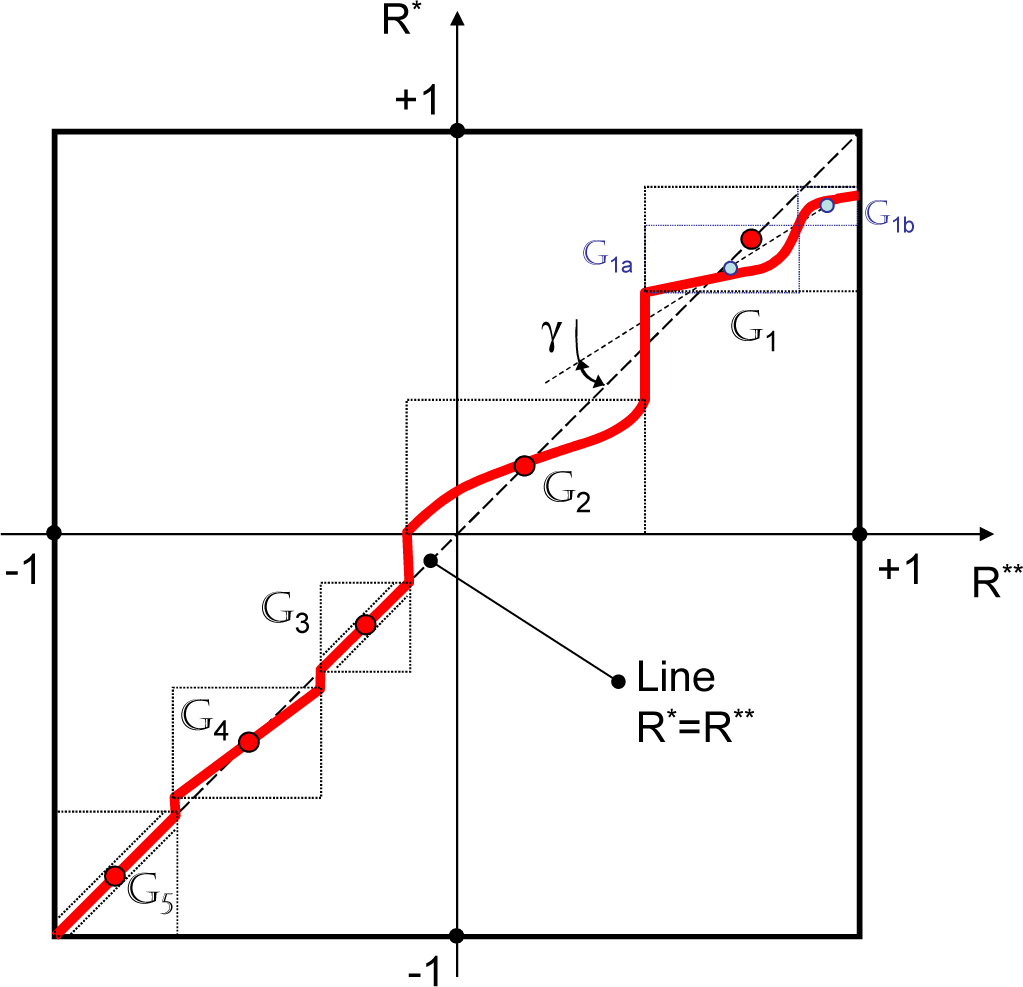
D. Evolutionary Intransitivity
D.1. Competitive Evolution
D.2. Evolutionary Intransitivity in Simulations of the Risk/benefit Dilemma
E. Summary of the Terms Characterising Intransitivity
- By strictness of the preference:
- – strict intransitivity: there exists A≻B≻C≻A
- – semi-strict intransitivity: there exists A≻C1≻…≻Ck≻A but intransitivity is not strict
- – semi-weak intransitivity: there exists A≻B~C≻A but intransitivity is not semi-strict
- – weak intransitivity: there exists A∼B∼C≻A but intransitivity is not semi-weak
- By localisation:
- – local intransitivity (combined with global transitivity)
- – global intransitivity (combined with local transitivity)
- – strong intransitivity (strict and both local and global)
- By explicit presence:
- – absolute transitivity: any kind of intransitivity is impossible under the given preference rules, implying existence of absolute utility or ranking
- – potential intransitivity: intransitivity does not necessarily show on the current set of elements but may appear when conditions are changed
- – current intransitivity or current transitivity: indicate the properties of preferences on the current set of elements
- – near-transitive evolution: evolution of an intransitive system that, within a fixed time interval, can be reasonably approximated by evolution of a transitive system
F. Note on Quantum Preferences
F.1. Quantum Preferences and Co-Rankings
F.2. Absolute Ranking in Quantum Case
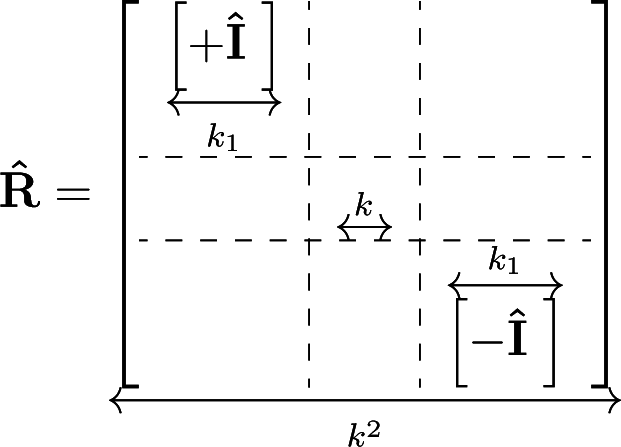

References
- Von Neumann, J.; Morgenstern, O. Theory of Games and Economic Behavior; Princeton University Press: Princeton, NJ, USA, 1953. [Google Scholar]
- Caratheodory, C. Studies in the foundation of thermodynamics. Math. Ann. 1909, 67, 355–386. [Google Scholar]
- Lieb, E.H.; Yngvason, J. The Entropy of Classical Thermodynamics. In Entropy; Greven, A., Keller, G., Warnecke, G., Eds.; Princeton University Press: Princeton, NY, USA, 2003; Chapter 8; pp. 147–195. [Google Scholar]
- Gyftopoulos, E.; Beretta, G. Thermodynamics. Foundations and Applications; Dover Publications: Mineola, NY, USA, 1991. [Google Scholar]
- Klimenko, A.Y. Mixing, entropy and competition. Phys. Scr. 2012, 85, 068201. [Google Scholar]
- Klimenko, A.Y. Complex competitive systems and competitive thermodynamics. Phil. Trans. R. Soc. A 2013, 371. [Google Scholar] [CrossRef]
- Klimenko, A. Entropy and Equilibria in Competitive Systems. Entropy 2014, 16, 1–22. [Google Scholar]
- Allais, M. Le Comportement de l’Homme Rationnel devant le Risque: Critique des Postulats et Axiomes de l’Ecole Americaine. Econometrica 1953, 21, 503–546. [Google Scholar]
- Edwards, W. The prediction of decisions among bets. J. Exp. Psychol. 1955, 50, 201–214. [Google Scholar]
- Kahneman, D.; Tversky, A. The psychology of preferences. Sci. Am. 1982, 246, 160–173. [Google Scholar]
- Quiggin, J. A theory of anticipated utility. J. Econ. Behav. Organ. 1982, 3, 323–343. [Google Scholar]
- Fishburn, P.C. Transitive measurable utility. J. Econ. Theory 1983, 31, 293–317. [Google Scholar]
- Tversky, A.; Kahneman, D. Advances in prospect theory: Cumulative representation of uncertainty. J. Risk Uncertain. 1992, 5, 297–323. [Google Scholar]
- Abe, S. Heat and generalized Clausius entropy of nonextensive systems 2000. arXiv:cond-mat/0012115.
- Tsallis, C. Nonextensive Statistical Mechanics and Thermodynamics: Historical Background and Present Status. In Nonextensive Statistical Mechanics and Its Applications; Abe, S., Okamoto, Y., Eds.; Springer: New York, NY, USA, 2001; pp. 3–98. [Google Scholar]
- Hanel, R.; Thurner, S. When do generalized entropies apply? How phase space volume determines entropy. Europhys. Lett. 2011, 96, 50003. [Google Scholar]
- de Condorcet, N. Essay on the Application of Analysis to the Probability of Majority Decisions; De L’imprimerie Royale: Paris, France; p. 1785.
- Tversky, A. Intransitivity of preferences. Psychol. Rev. 1969, 76, 31–48. [Google Scholar]
- Rubinstein, A. Similarity and decision-making under risk: Is there a utility theory resolution to the Allais paradox? J. Econ. Theory 1988, 1, 145–153. [Google Scholar]
- Temkin, L.S. A Continuum Argument for Intransitivity. Philos. Public Aff. 1996, 25, 175–210. [Google Scholar]
- Tullock, G. The Irrationality of Intransitivity. Oxf. Econ. Pap. 1964, 16, 401–406. [Google Scholar]
- Anand, P. The philosophy of intransitive preference. Econ. J. 1993, 103, 337–346. [Google Scholar]
- Debreu, G. Continuity properties of Paretian utility. Int. Econ. Rev. 1964, 5, 285–293. [Google Scholar]
- Nash, J.F. Equilibrium Points in n-Person Games. Proc. Natl. Acad. Sci. USA 1950, 36, 48–49. [Google Scholar]
- Makowski, M. Transitivity vs. intransitivity in decision making process—An example in quantum game theory. Phys. Lett. A 2009, 373, 2125–2130. [Google Scholar]
- Piotrowski, E.W.; Makowski, M. Cat’s dilemma transitivity vs. intransitivity. Fluct. Noise Lett. 2005, 5, L85–L95. [Google Scholar]
- Makowski, M.; Piotrowski, E.; Sladkowski, J. Do Transitive Preferences Always Result in Indifferent Divisions? Entropy 2015, 17, 968–983. [Google Scholar]
- Makowski, M.; Piotrowski, E.W. Decisions in elections-transitive or intransitive quantum preferences. J. Phys. A 2011, 44. [Google Scholar] [CrossRef]
- Persad, G.C. Risk, Everyday Intuitions, and the Institutional Value of Tort Law. Stanf. Law Rev. 2010, 62, 1445–1471. [Google Scholar]
- Katz, L. Rational Choice versus Lawful Choice. J. Inst. Theor. Econ. 2014, 170, 105–121. [Google Scholar]
- Feldman, M.W.; Riley, M.A.; Kerr, B.; Bohannan, B.J.M. Local dispersal promotes biodiversity in a real-life game of rock-paper-scissors. Nature 2002, 418, 171–174. [Google Scholar]
- Reichenbach, T.; Mobilia, M.; Frey, E. Mobility promotes and jeopardizes biodiversity in rock-paper-scissors games. Nature 2007, 448, 1046–1049. [Google Scholar]
- Marshall, L.; Webb, S.D.; Sepkoski, J.J., Jr.; Raup, D.M. Mammalian Evolution and the Great American Interchange. Science 1982, 215, 1351–1357. [Google Scholar]
- Avelino, P.P.; Bazeia, D.; Menezes, J.; de Oliveira, B.F. String networks in ZN Lotka-Volterra competition models. Phys. Lett. A 2014, 378, 393–397. [Google Scholar]
- Lotka, A.J. Undamped oscillations derived from the law of mass action. J. Am. Chem. Soc. 1920, 42, 1595–1599. [Google Scholar]
- Volterra, V. The general equations of biological strife in the case of historical actions. Proc. Edinb. Math. Soc. 1939, 6, 4–10. [Google Scholar]
- Arrow, K.J. Social Choice and Individual Values; Yale University Press: New Haven, CT, USA, 1951. [Google Scholar]
- Ariely, D. Predictably Irrational; HarperCollins: New York, NY, USA, 2008. [Google Scholar]
- Ng, Y.K. Sub-semiorder: A model of multidimensional choice with preference intransitivity. J. Math. Psychol. 1977, 16, 51–59. [Google Scholar]
- Scholten, M.; Read, D. Prospect theory and the forgotten fourfold pattern of risk preferences. J. Risk Uncertain. 2013, 48, 67–83. [Google Scholar]
- Leland, J.W. Similarity judgements and anomalies in intertemporal choice. Econ. Inq. 2002, 40, 574–581. [Google Scholar]
- Lorentziadis, P.L. Preference under risk in the presence of indistinguishable probabilities. Oper. Res. 2013, 13, 429–446. [Google Scholar]
- Klimenko, A.Y. Complexity and intransitivity in technological development. J. Syst. Sci. Syst. Eng. 2014, 23, 128–152. [Google Scholar]
- Klimenko, A.Y. Teaching the third law of thermodynamics. Open Thermodyn. J. 2012, 6, 1–14. [Google Scholar]
- Smith, J.D.; Depew, D.J.; Weber, B.H. Entropy, Information, and Evolution: New Perspectives on Physical and Biological Evolution; MIT Press: Cambridge, MA, USA, 1988. [Google Scholar]
- Meyer, D.A. Quantum Strategies. Phys. Rev. Lett. 1999, 82, 1052–1055. [Google Scholar]
- Klimenko, A.Y. A note on invariant properties of a quantum system placed into thermodynamic environment. Physica A 2014, 398, 65–75. [Google Scholar]
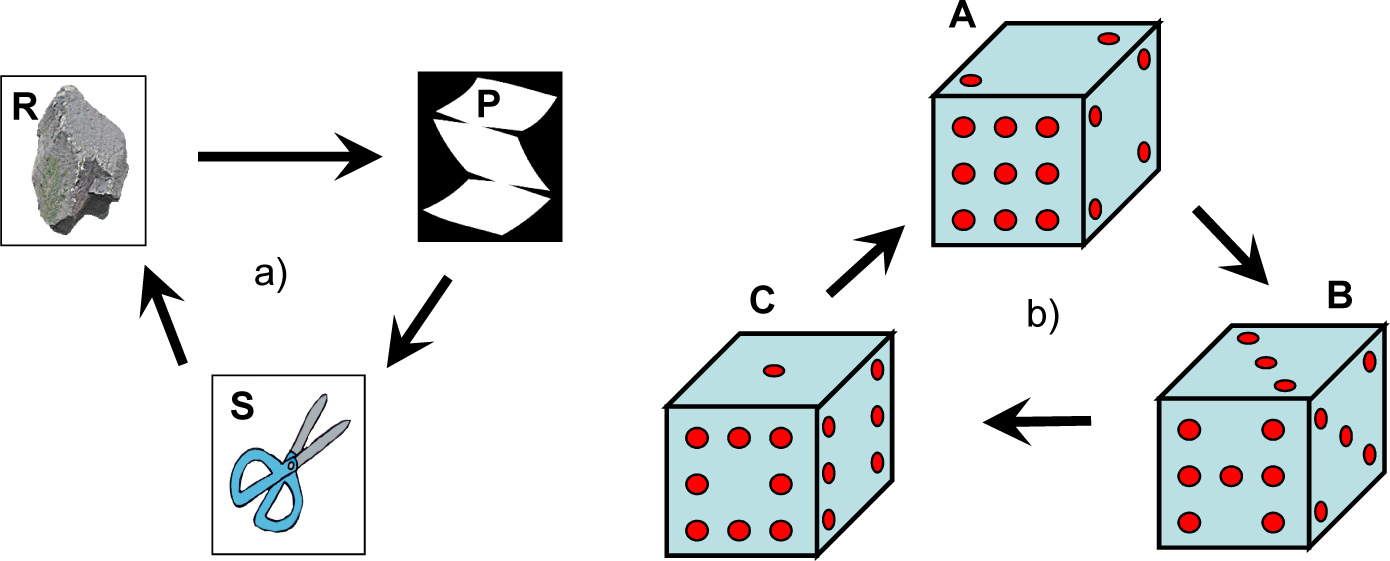
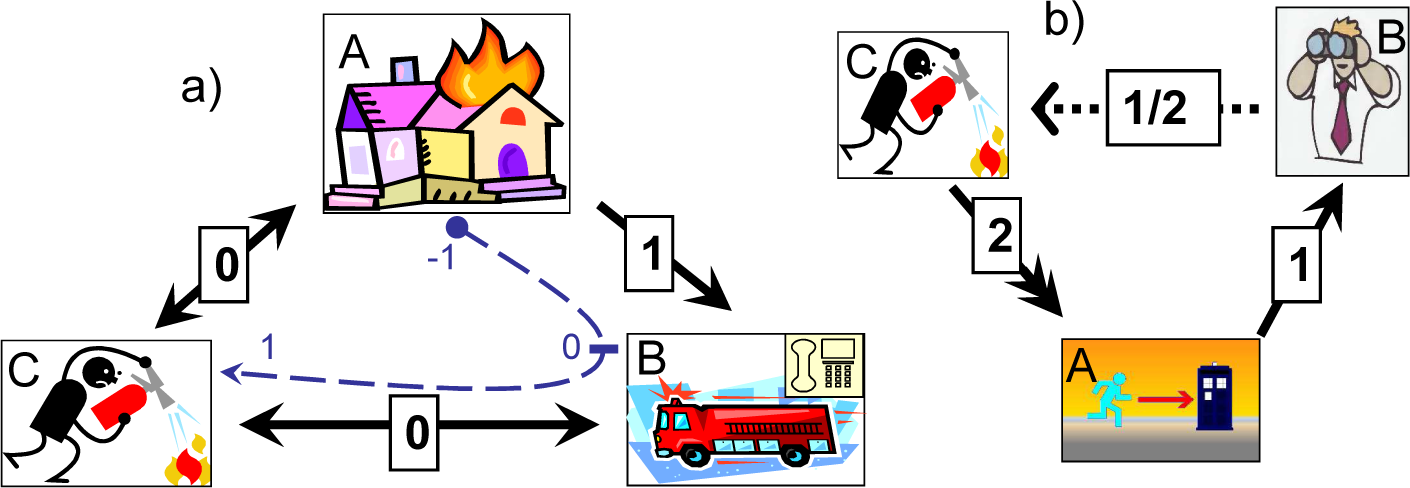
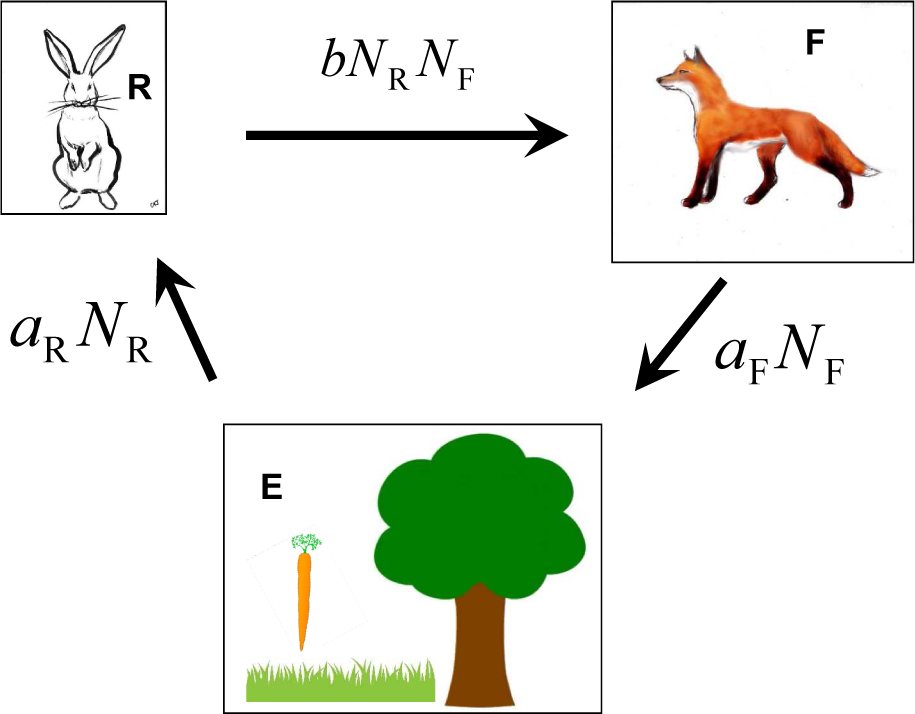


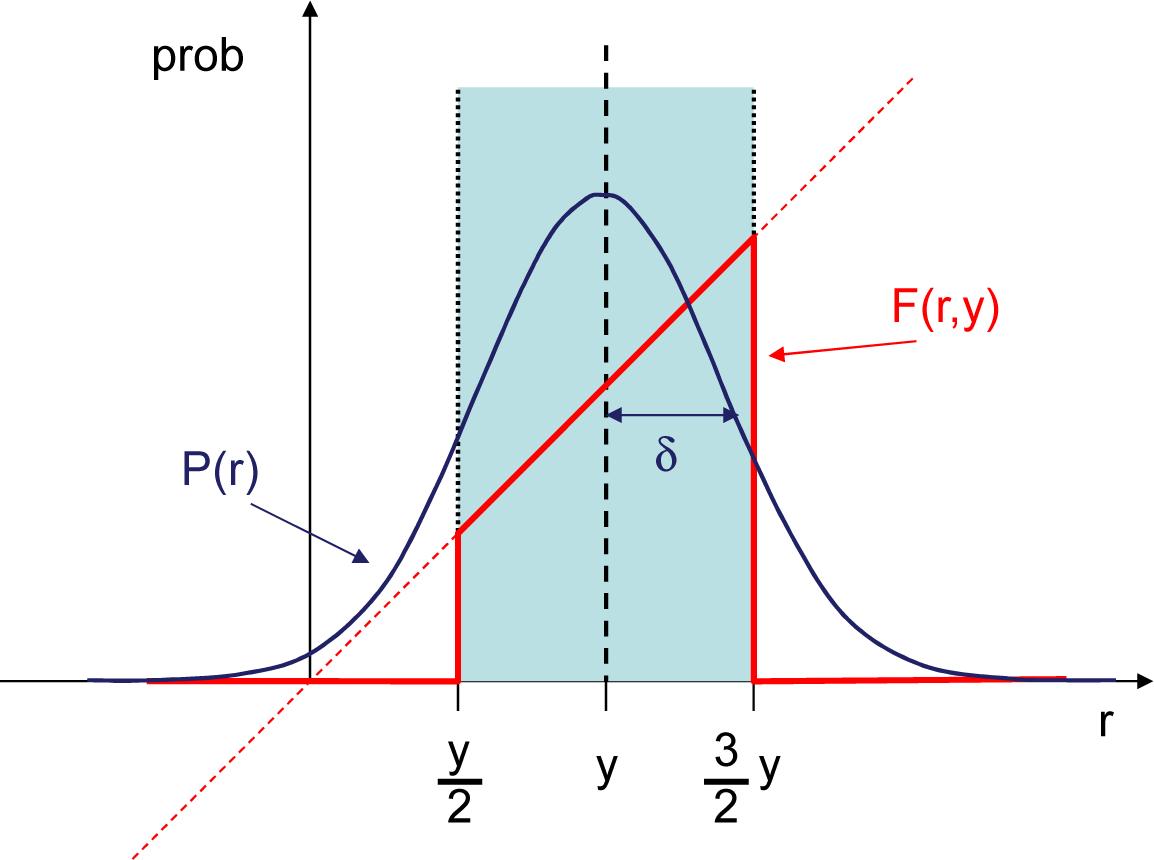
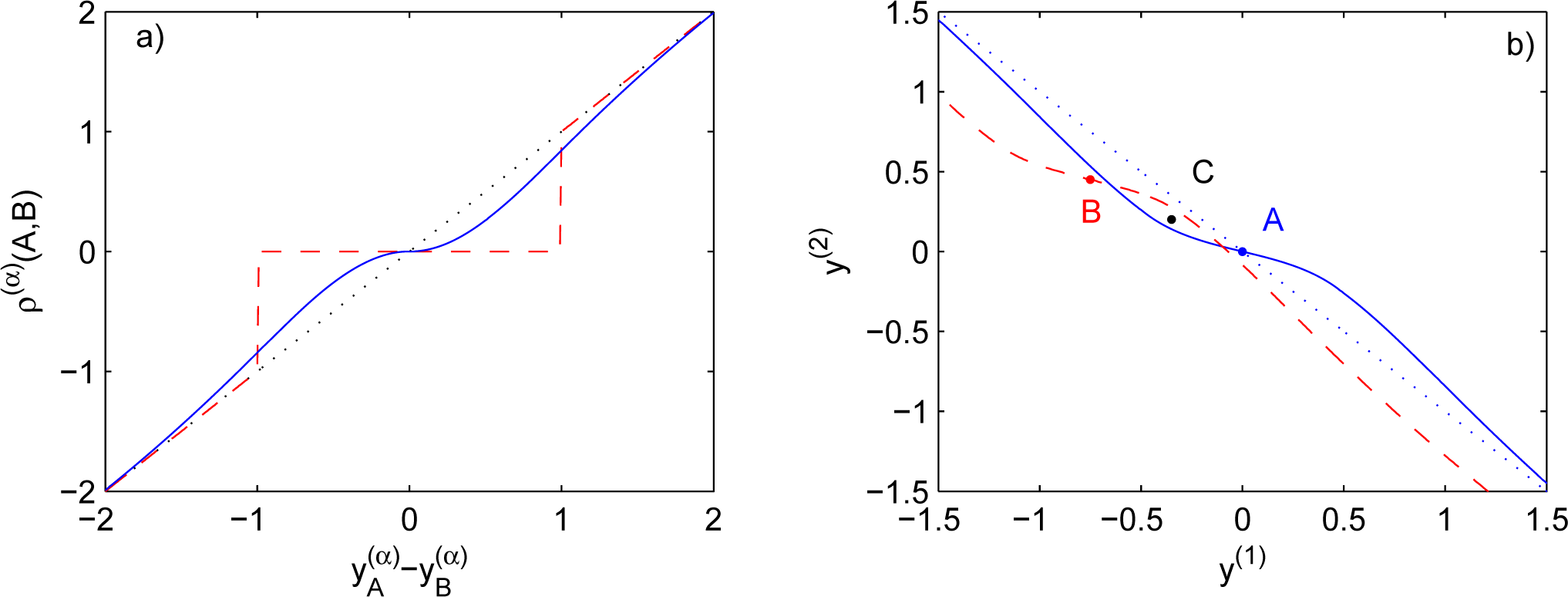
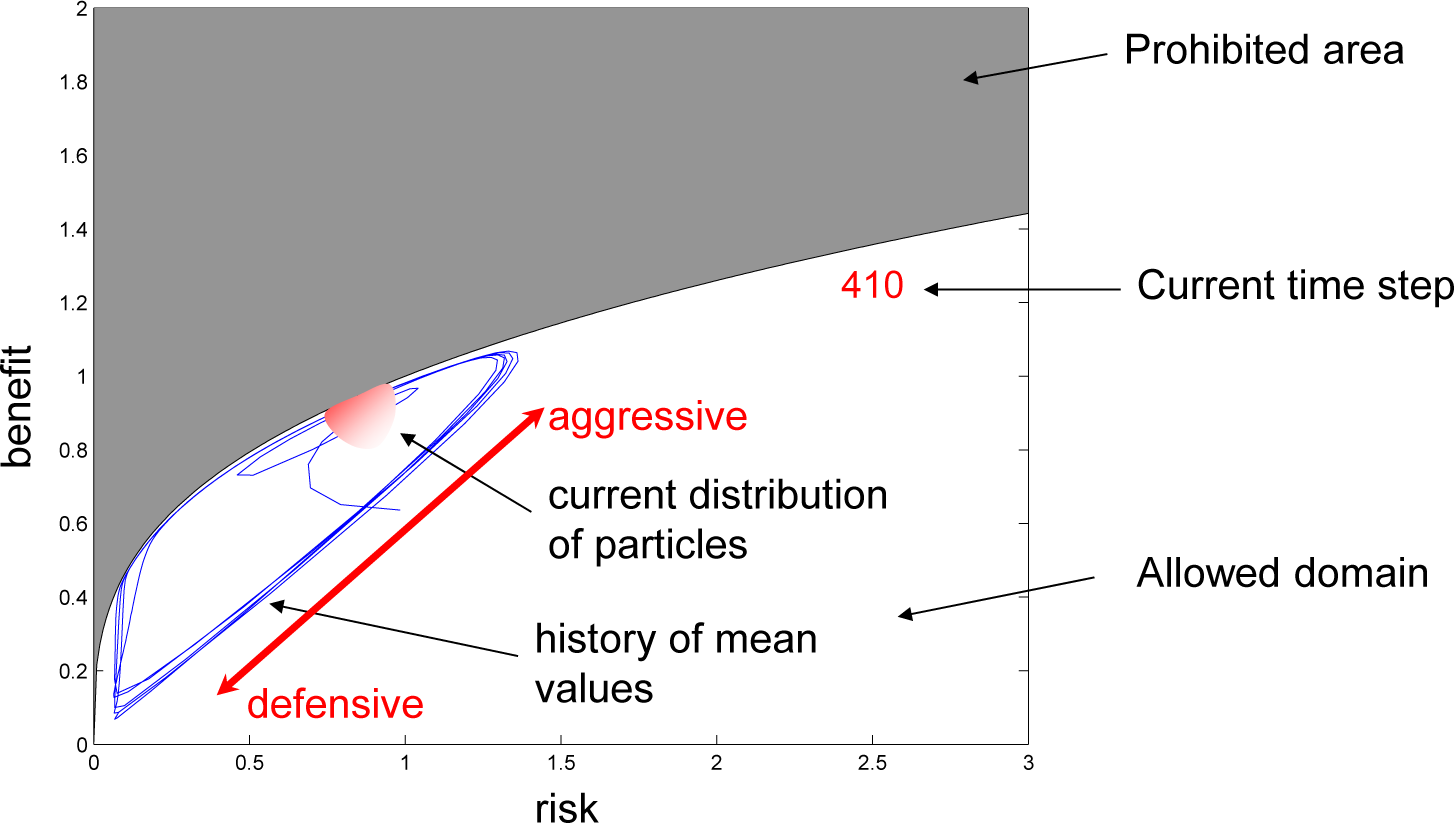

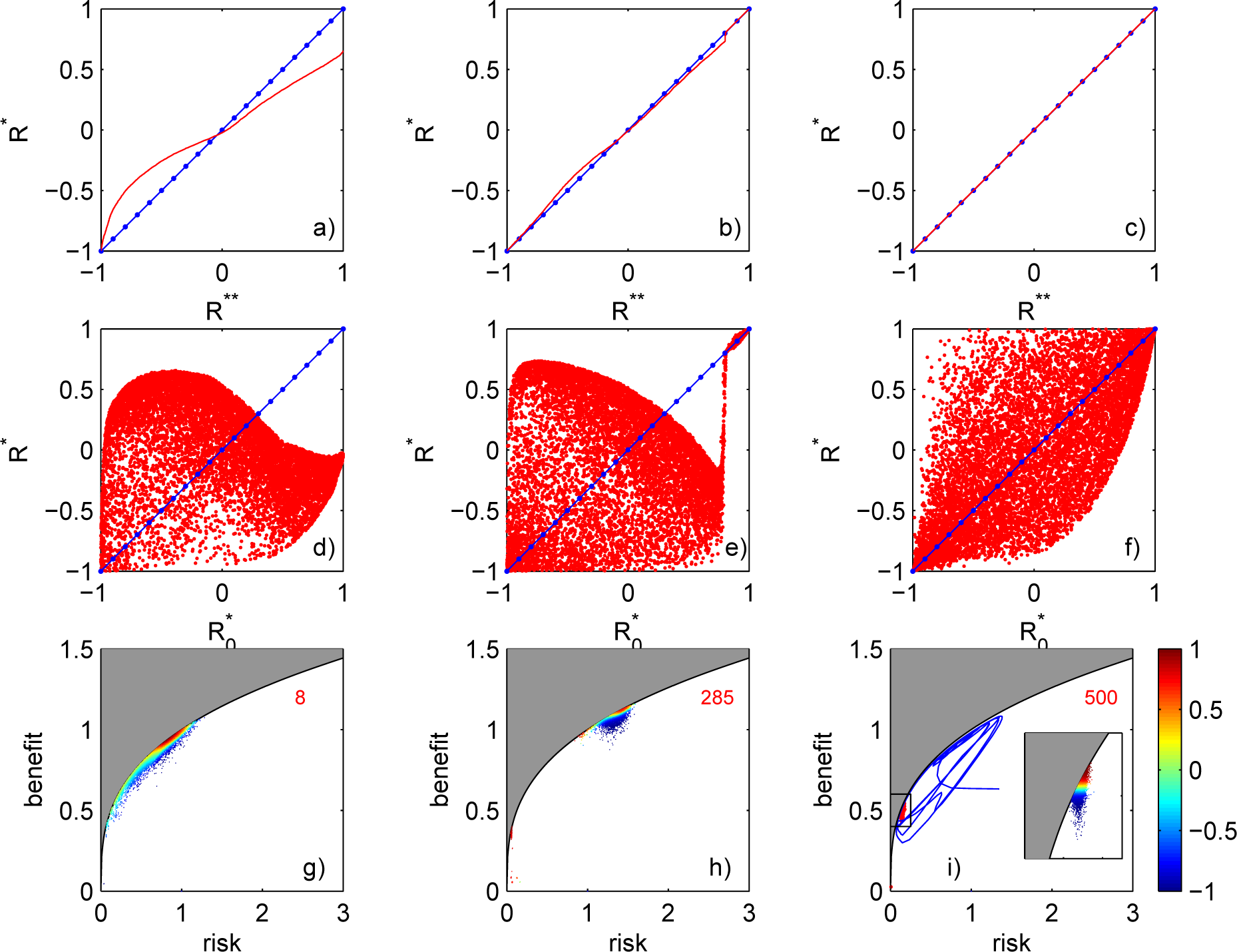

© 2015 by the authors; licensee MDPI, Basel, Switzerland This article is an open access article distributed under the terms and conditions of the Creative Commons Attribution license (http://creativecommons.org/licenses/by/4.0/).
Share and Cite
Klimenko, A.Y. Intransitivity in Theory and in the Real World. Entropy 2015, 17, 4364-4412. https://doi.org/10.3390/e17064364
Klimenko AY. Intransitivity in Theory and in the Real World. Entropy. 2015; 17(6):4364-4412. https://doi.org/10.3390/e17064364
Chicago/Turabian StyleKlimenko, Alexander Y. 2015. "Intransitivity in Theory and in the Real World" Entropy 17, no. 6: 4364-4412. https://doi.org/10.3390/e17064364




